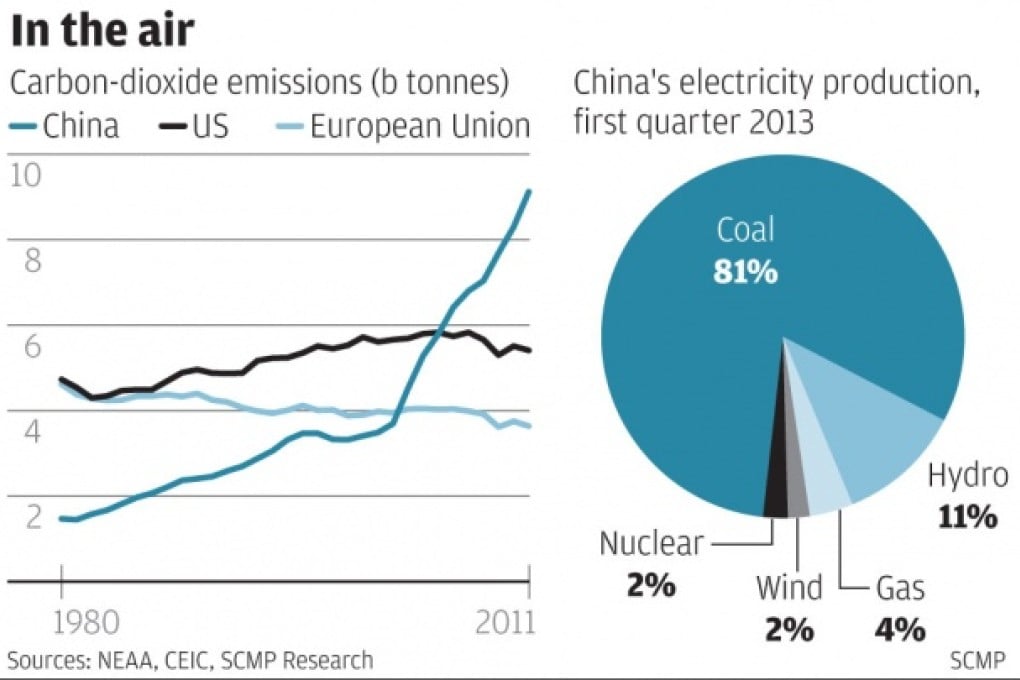Monitor | China a green energy leader? Don't make me laugh
Read the praise heaped on Beijing by two recent reports, and you could believe the mainland is leading the world in environmental best practice

Did you know that China is the greenest country in the world?
I confess, it was news to me. And I am pretty sure it will come as news to the inhabitants of Beijing, where memories of January's two-week toxic coal smog linger like a foul smell.
But if you were to judge by the breathy praise heaped on Beijing by a couple of recent reports, you could easily get the impression that China is leading the rest of the world into the clean, sunlit uplands of environmental best practice.
According to a paper co-authored by the environment movement aristocrat Tim Flannery and published this week by Australia's Climate Commission, "China's efforts demonstrate accelerating global leadership in tackling climate change".
Quoting Premier Li Keqiang's March declaration that "we shouldn't pursue economic growth at the expense of the environment", the report applauds Beijing's emphasis on investing in clean energy.
It says that China has increased its wind power capacity 50 times over since 2005, while solar generating capacity shot up 75 per cent last year alone.
